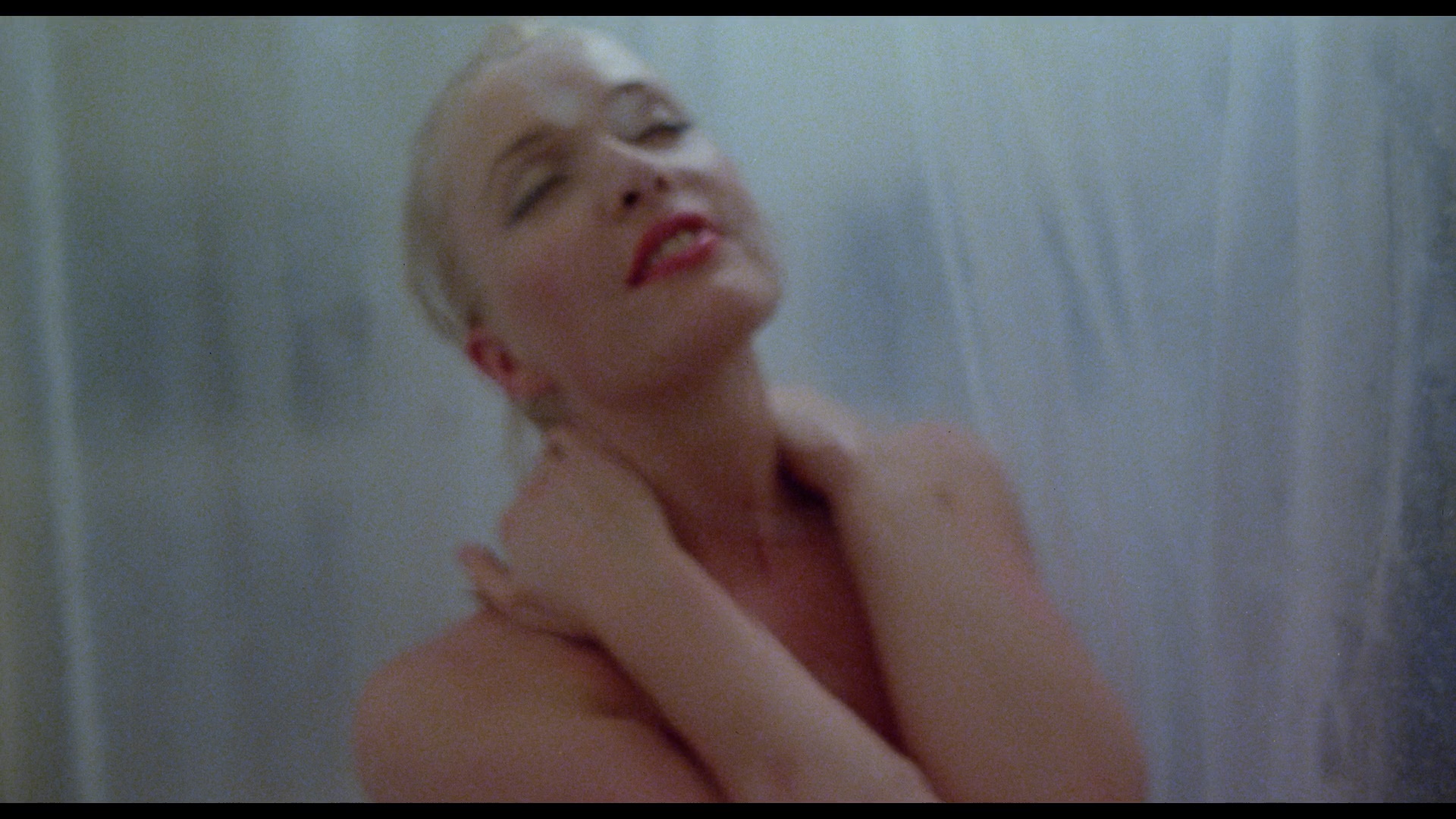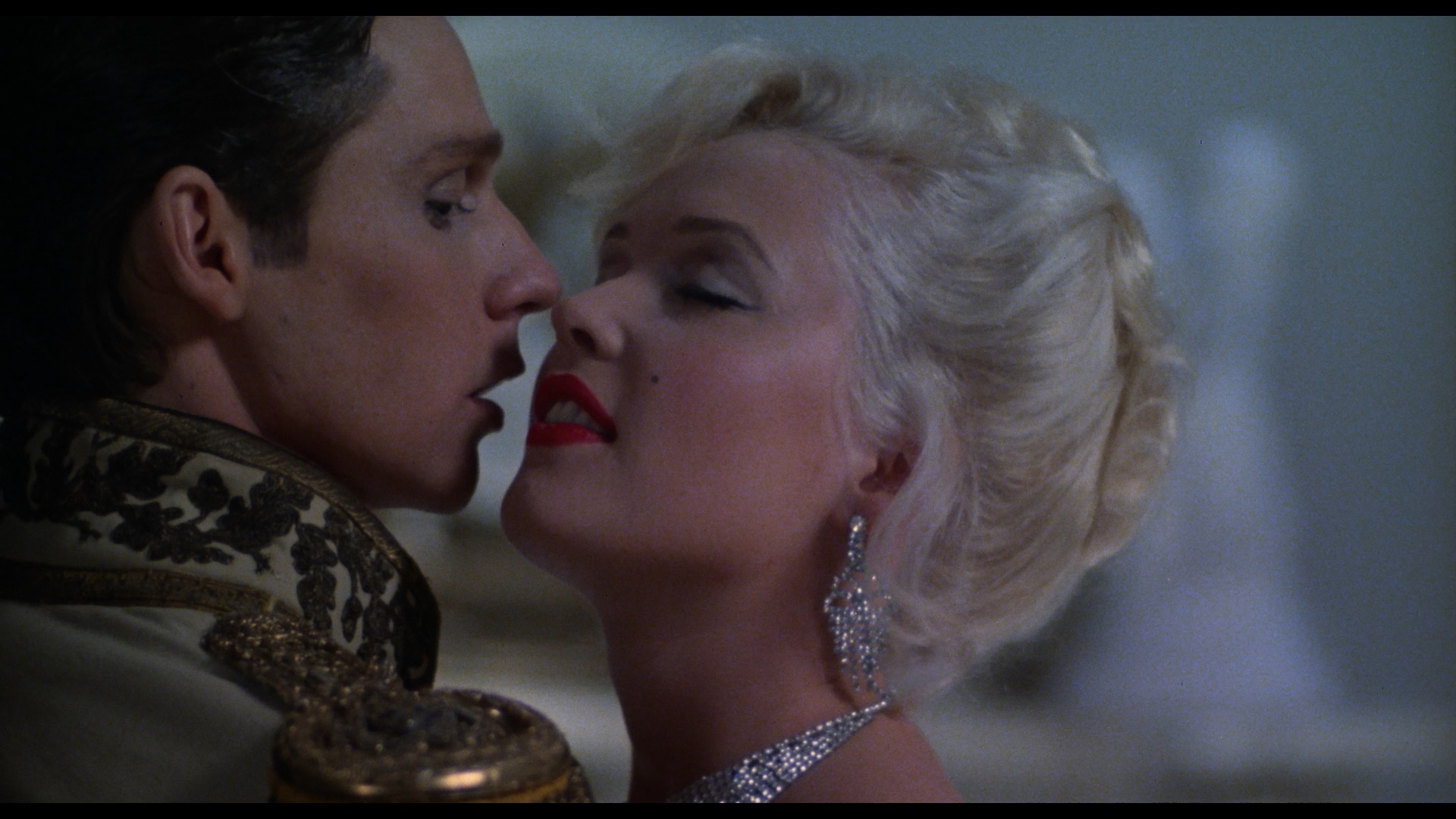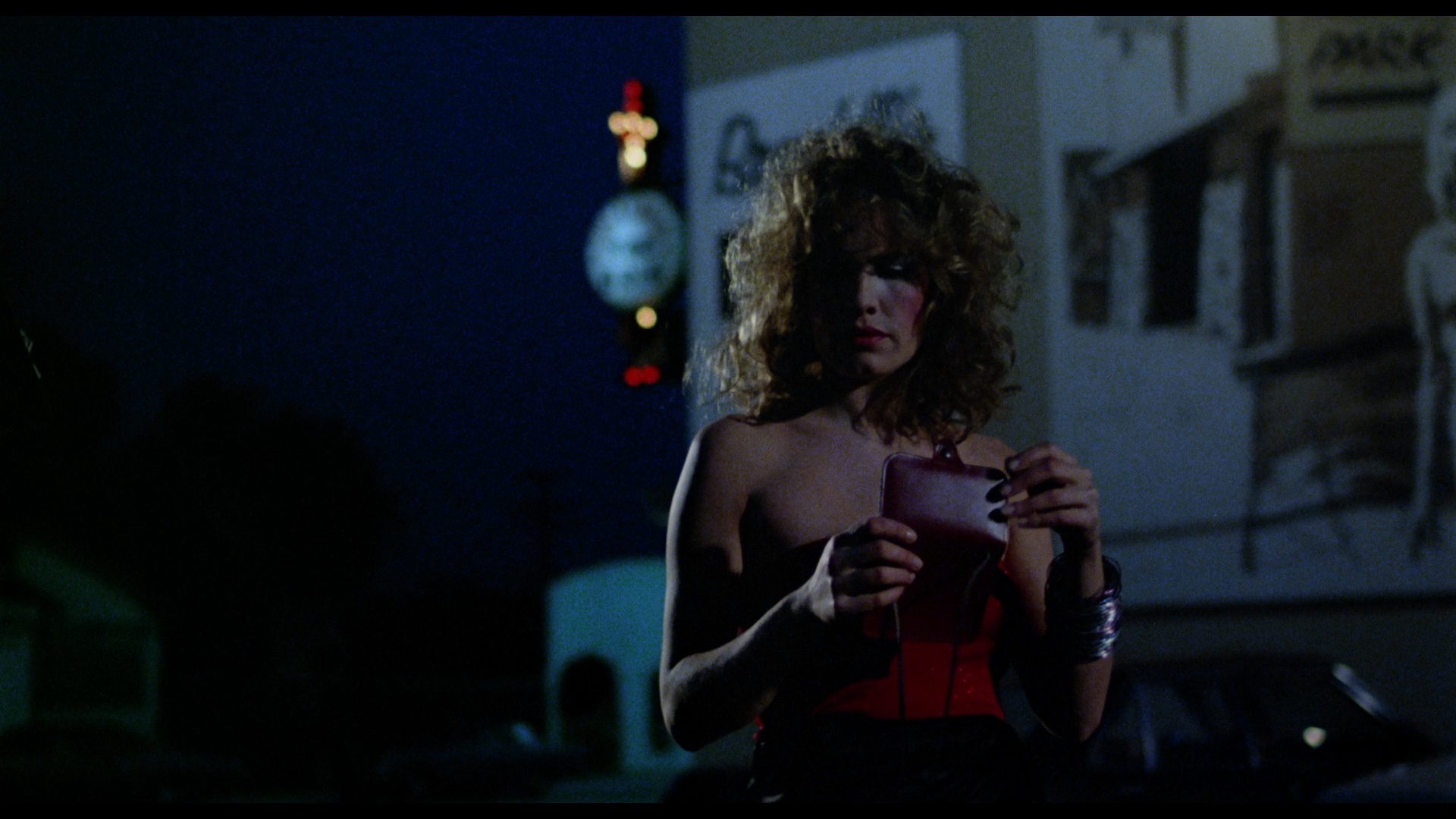



 unsettling mixture of Taxi Driver and
unsettling mixture of Taxi Driver and  The Monster Squad, Fade to Black was a very odd duck when it opened during the flurry of slasher films in the early '80s. Promoted as a horror film but a bit tougher to nail down than that, it's a movie buff spin on the unhinged loner idea that was also fueling films like Maniac, Don't Go in the House, and Don't Answer the Phone, albeit on a much less explicit level here. Shot for little money and a moderate success on the drive-in and shopping mall circuit, the film made an impression at the time thanks to its occasionally nightmarish imagery, a very committed central performance by Dennis Christopher (hot off his big role in Breaking Away), and a very memorable trailer.
The Monster Squad, Fade to Black was a very odd duck when it opened during the flurry of slasher films in the early '80s. Promoted as a horror film but a bit tougher to nail down than that, it's a movie buff spin on the unhinged loner idea that was also fueling films like Maniac, Don't Go in the House, and Don't Answer the Phone, albeit on a much less explicit level here. Shot for little money and a moderate success on the drive-in and shopping mall circuit, the film made an impression at the time thanks to its occasionally nightmarish imagery, a very committed central performance by Dennis Christopher (hot off his big role in Breaking Away), and a very memorable trailer.
 abuses himself to a fantasy of Kerridge crooning "Happy Birthday, Mr. President" may test some viewers' sensibilities. Craig Safan's nerve-jangling score ranks with some of his best work of the period, making it more of a pity he didn't come back to horror more often. The core message that excessive film mania can cause a tendency to react violently and indulge in gruesome activities is still a pretty dubious one, especially when it's precisely the same activities in which the film wallows and tries to turn a profit. This essential contradiction never really resolves itself, but perhaps that's also what gives it such an uneasy ambiance that lingers today.
abuses himself to a fantasy of Kerridge crooning "Happy Birthday, Mr. President" may test some viewers' sensibilities. Craig Safan's nerve-jangling score ranks with some of his best work of the period, making it more of a pity he didn't come back to horror more often. The core message that excessive film mania can cause a tendency to react violently and indulge in gruesome activities is still a pretty dubious one, especially when it's precisely the same activities in which the film wallows and tries to turn a profit. This essential contradiction never really resolves itself, but perhaps that's also what gives it such an uneasy ambiance that lingers today.  just because. You get no less than three audio commentaries here, starting with Christopher
just because. You get no less than three audio commentaries here, starting with Christopher  chatting with the label's Brad Henderson in detail about the film about the film research required for the role, the shooting schedule, the machinations needed to pull off Kerridge's song performance, his thoughts on cinephilia, and more. Then the foursome from The Hysteria Continues offer their own take on the film focusing on its relationship to the horror genre (and, sort of, the slasher subgenre), their first encounters and history with the film over the years, the rather icky reason Kerridge ended up doing an issue of Playboy later the same year, the potential involvement of Blondie on the soundtrack, and quite a bit of history about the film's publicity and the various participants among the cast and crew. As always, it's an amiable hangout of a track and a good way to kill 100 minutes. Finally there's what's billed as a "historical" commentary track with the welcome duo of Amanda Reyes and Bill Ackerman, which runs through the original intended opening, the use of Hollywood clips as commentary and foreshadowing, the notable ringers in the cast (including a pre-Trancers Tim Thomerson), numerous variations compared to the original script, possible influences on some later films, and the flood of notable films that also came out that year.
chatting with the label's Brad Henderson in detail about the film about the film research required for the role, the shooting schedule, the machinations needed to pull off Kerridge's song performance, his thoughts on cinephilia, and more. Then the foursome from The Hysteria Continues offer their own take on the film focusing on its relationship to the horror genre (and, sort of, the slasher subgenre), their first encounters and history with the film over the years, the rather icky reason Kerridge ended up doing an issue of Playboy later the same year, the potential involvement of Blondie on the soundtrack, and quite a bit of history about the film's publicity and the various participants among the cast and crew. As always, it's an amiable hangout of a track and a good way to kill 100 minutes. Finally there's what's billed as a "historical" commentary track with the welcome duo of Amanda Reyes and Bill Ackerman, which runs through the original intended opening, the use of Hollywood clips as commentary and foreshadowing, the notable ringers in the cast (including a pre-Trancers Tim Thomerson), numerous variations compared to the original script, possible influences on some later films, and the flood of notable films that also came out that year.  mainstream glory with The Last Starfighter and Remo Williams: The Adventure Begins, turns up in "Experimenting with Sound" (12m29s) to
mainstream glory with The Last Starfighter and Remo Williams: The Adventure Begins, turns up in "Experimenting with Sound" (12m29s) to  explain how he wanted to toy with synthesizers and orchestra in unusual ways during his early days (around thirty years old at the time) as well as the strangeness of jumping into this film once the director was already gone. He also explains how he wanted to reflect the main character's psychosis by taking a noisy, atonal approach when necessary to echo the torment in his brain, and he even shows off one of the original score books, too. "Finishing the Story" (8m45s) features editor Barbara Pokras recalling her transition to this film after working under Roger Corman (which made her appreciate some of the aspects of how women were portrayed in exploitation films) and her thoughts on this film (which was at an odd stage when she came aboard) as well as her affinity for the unusual melding of tones here. Posing in front of an artificial lake background, stylist Patricia Bunch appears in "A Brush with Darkness" (14m42s) for a look at the lessons she learned about creating monsters, the execution of her favorite scene, and some fun anecdotes from the makeup tricks she had to employ during the shoot as well as the various young supporting actors like Mickey Rourke and Peter Horton. Finally an audio interview with the new elusive Kerridge (31m18s) will be a draw for a lot of fans as she talks about being discovered in Hollywood, the Marilyn Monroe angle in the story, her modeling in Australia, an entire subplot that got cut out, and the path she took after retiring from acting. That great theatrical trailer is also included along with a gallery (10m8s) of international poster art, lobby cards, and tons of Kerridge stills.
explain how he wanted to toy with synthesizers and orchestra in unusual ways during his early days (around thirty years old at the time) as well as the strangeness of jumping into this film once the director was already gone. He also explains how he wanted to reflect the main character's psychosis by taking a noisy, atonal approach when necessary to echo the torment in his brain, and he even shows off one of the original score books, too. "Finishing the Story" (8m45s) features editor Barbara Pokras recalling her transition to this film after working under Roger Corman (which made her appreciate some of the aspects of how women were portrayed in exploitation films) and her thoughts on this film (which was at an odd stage when she came aboard) as well as her affinity for the unusual melding of tones here. Posing in front of an artificial lake background, stylist Patricia Bunch appears in "A Brush with Darkness" (14m42s) for a look at the lessons she learned about creating monsters, the execution of her favorite scene, and some fun anecdotes from the makeup tricks she had to employ during the shoot as well as the various young supporting actors like Mickey Rourke and Peter Horton. Finally an audio interview with the new elusive Kerridge (31m18s) will be a draw for a lot of fans as she talks about being discovered in Hollywood, the Marilyn Monroe angle in the story, her modeling in Australia, an entire subplot that got cut out, and the path she took after retiring from acting. That great theatrical trailer is also included along with a gallery (10m8s) of international poster art, lobby cards, and tons of Kerridge stills. Vinegar Syndrome (Blu-ray)
Anchor Bay (DVD)
![]()